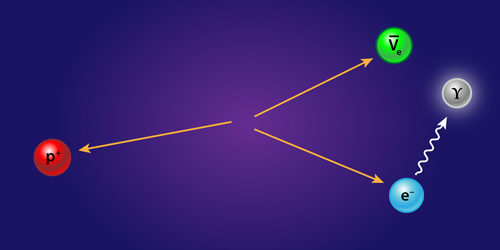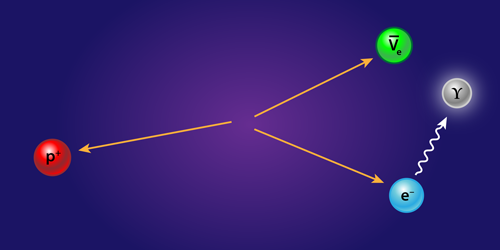Trailing the Photons from Neutron Decay
A neutron in free space lives for about 15 minutes before decaying into a proton, an electron, and an antineutrino. According to quantum electrodynamics (QED), the decay also produces photons, most of which come from the deceleration of the emitted electron. Now the spectrum of these photons has been measured with the greatest precision to date in an experiment at the National Institute of Standards and Technology (NIST), Maryland. The measurement comes close to the level of precision needed to look for deviations from QED predictions, which would signal a break from standard model physics.
The experiment, known as RDK II, sends a narrow beam of neutrons through a magnetic coil. When a neutron decays, the coil’s field guides the emitted electron and proton away from the beam and to a charge-sensitive detector, where the particles are counted. But a photon is counted only if it’s detected in coincidence with a signal from both a proton and an electron.
In 2006, the NIST team used this setup to measure the photon branching ratio (the fraction of radiation-producing decays) with an uncertainty of about 10% over a limited energy range. The new experiment reduces this uncertainty to less than 5% by measuring more neutrons, collecting more photons, and using new techniques to characterize the detectors. Based on 22 million electron-proton events, the researchers report an average branching ratio of for product photons with energies between 14.1 and 782 keV. They are now working on reducing the experimental uncertainty to the 1% level needed to test predictions that go beyond QED.
This research is published in Physical Review Letters.
–Jessica Thomas
Jessica Thomas is the Editor of Physics.





